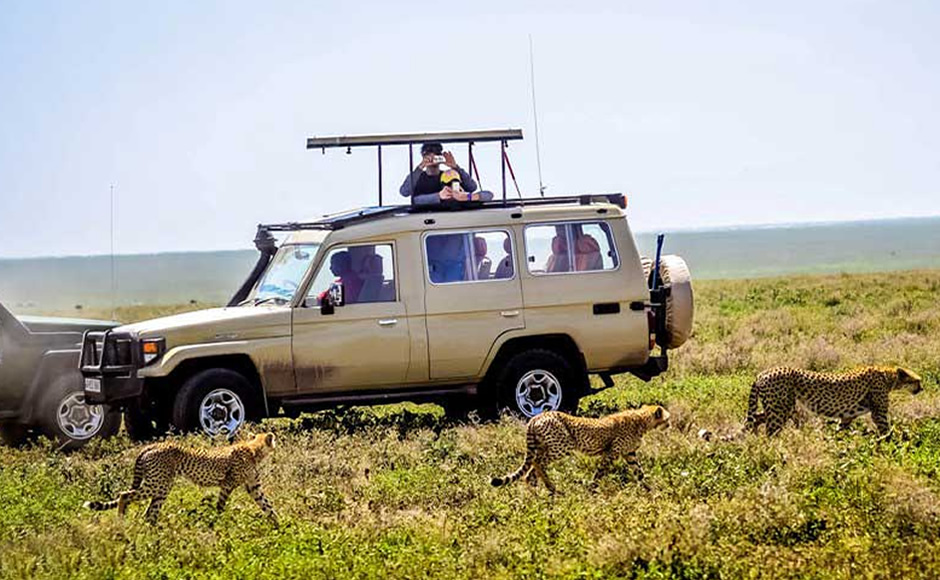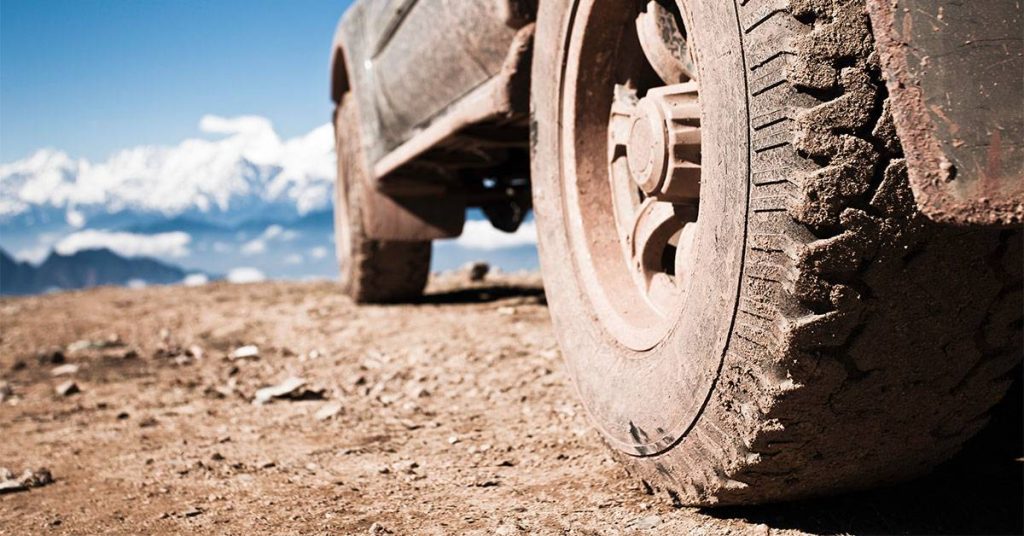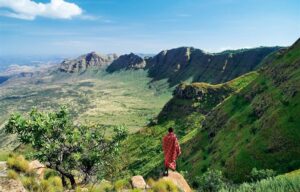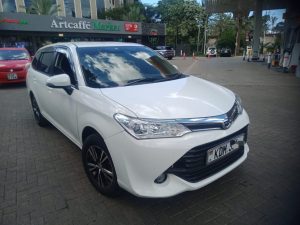
Kenya, the jewel of East Africa, is a land of extraordinary contrasts and breathtaking landscapes that demand more than just ordinary transportation. From the vast savannas of the Maasai Mara to the rugged terrains of the Northern Frontier, from coastal roads that disappear during high tide to mountain tracks that test both machine and driver, Kenya is essentially a 4×4 paradise. This comprehensive guide explores why four-wheel-drive vehicles are not just recommended but often essential for truly experiencing the Kenyan wilderness.
Why 4×4 is Essential in Kenya
The Kenyan landscape presents unique challenges that make 4×4 vehicles indispensable for serious travel and exploration. While major highways connecting cities like Nairobi, Mombasa, and Kisumu are well-paved, venturing off these arterial routes quickly reveals why Kenyans have such affection for rugged vehicles.

The Terrain Challenge
Kenya’s diverse geography includes black cotton soil that becomes treacherous quicksand during rains, volcanic rock fields in the Rift Valley that can shred ordinary tires, sandy stretches along the coast and in Tsavo, and steep escarpments where traction becomes critical. The country experiences two rainy seasons—the long rains from March to May and short rains from October to December—that transform roads into rivers and create mud pools capable of swallowing vehicles whole.
Game parks and reserves, where most tourists spend considerable time, feature tracks rather than roads. These routes are often deeply rutted from previous vehicle passages, crossed by seasonal streams, and can include steep inclines where underbelly clearance becomes crucial. Park authorities intentionally keep many tracks rough to limit vehicle numbers and environmental impact, making high ground clearance and four-wheel-drive capability non-negotiable.
Cultural and Economic Significance
In Kenya, 4×4 vehicles represent more than transportation—they’re tools of trade, symbols of adventure, and essential equipment for safari operators, conservationists, and rural communities. The safari industry, which generates significant foreign exchange for the country, depends entirely on reliable 4×4 vehicles. A breakdown in the middle of the Maasai Mara during the Great Migration isn’t just inconvenient; it could mean missing once-in-a-lifetime wildlife moments for clients who’ve traveled thousands of miles.
Rural Kenya, where infrastructure development lags behind urban centers, relies heavily on 4×4 vehicles for everything from transporting goods to accessing healthcare and education. During rainy seasons, many communities become completely cut off without four-wheel-drive vehicles capable of navigating flooded roads and muddy tracks.
Popular 4×4 Destinations in Kenya

Maasai Mara National Reserve
Perhaps Africa’s most famous wildlife destination, the Mara’s 1,510 square kilometers of pristine wilderness feature rolling grasslands interrupted by the Mara River and its tributaries. During the annual wildebeest migration between July and October, millions of animals cross the river in spectacular fashion, but witnessing this requires navigating challenging terrain where vehicles frequently become stuck.
The reserve’s tracks can deteriorate rapidly, with deep ruts created by safari vehicles creating washboard surfaces that test suspension systems. Black cotton soil areas become impassable without 4×4, and even with it, vehicles need experienced drivers who understand momentum, wheel placement, and when to engage diff-locks.
Amboseli National Park
Dominated by views of Mount Kilimanjaro, Africa’s highest peak, Amboseli presents different challenges. The dried-up Lake Amboseli creates dust storms that reduce visibility to near zero, while other areas feature volcanic soil that becomes powder-fine dust in dry seasons and sticky mud when wet. The park’s swampy areas near natural springs require careful navigation, and many tourists have watched elephants wade through water that would flood an ordinary vehicle’s engine.
Samburu, Buffalo Springs, and Shaba Reserves
Northern Kenya’s arid landscapes offer a more rugged 4×4 experience. These reserves in semi-desert terrain feature rocky outcrops, sandy riverbeds, and roads that are merely suggestions of routes. The Ewaso Ng’iro River provides a lifeline to wildlife, but crossing points can be treacherous. High temperatures stress vehicles, making reliable cooling systems and robust engines essential.
Tsavo East and West National Parks
Combined, these parks form one of the world’s largest protected areas, covering over 22,000 square kilometers. Tsavo’s famous red elephants get their color from the iron-rich red soil that also creates challenging driving conditions. Long distances between points of interest mean vehicles must be reliable, with good fuel capacity and spare parts capability.
Hell’s Gate National Park
Unique among Kenyan parks for allowing walking and cycling, Hell’s Gate also offers spectacular 4×4 routes through gorges and past geothermal features. The narrow gorges present navigation challenges requiring precise wheel placement, while volcanic rock can puncture tires without warning.
Lake Turkana Region
Often called the “Jade Sea,” reaching Lake Turkana requires serious 4×4 capability. The journey north from Maralal to Loyangalani tests vehicles and drivers alike, with roads that disappear into riverbeds, sections of deep sand, and rocky volcanic fields. This region isn’t for casual tourists—it demands expedition-level preparation with multiple vehicles recommended for safety.
Coastal Adventures
Kenya’s 536-kilometer coastline offers unique 4×4 experiences, from beach driving where tide timing is crucial to forest tracks in Arabuko Sokoke. The Tana River delta and Lamu Archipelago access routes challenge vehicles with soft sand and tidal crossings.
Top 4×4 Vehicles for Kenya
Choosing the right 4×4 in Kenya requires balancing capability, reliability, parts availability, and purpose. Here are four vehicles that have proven themselves in the East African context:

1. Toyota Land Cruiser (70 Series)
The Toyota Land Cruiser 70 Series is arguably the most iconic vehicle on Kenyan roads and particularly in the safari industry. First introduced in 1984 and still in production, the 70 Series has achieved legendary status for good reason.
Why it excels in Kenya:
- Unmatched reliability: The 70 Series features simple, proven technology that’s been refined over decades. The 4.5-liter V8 diesel engine is nearly bulletproof, capable of running in extreme conditions with minimal maintenance
- Parts availability: Every mechanic in Kenya knows Land Cruisers inside out, and spare parts are available even in remote towns. This ecosystem of support is invaluable when far from major cities
- Ground clearance: At approximately 230mm, the 70 Series clears obstacles that would stop lesser vehicles
- Payload capacity: Safari operators love the 70 Series because it can carry multiple passengers, camping equipment, and supplies without being overburdened
- Simplicity: Without excessive electronics, field repairs are possible, and the vehicle is less likely to suffer mysterious electrical failures
Variants popular in Kenya: The pickup version (79 Series) is beloved by tour operators and NGOs for its cargo versatility, while the wagon versions (76 and 78 Series) dominate the safari circuit with pop-up roofs for game viewing.
Considerations: The 70 Series isn’t luxurious by modern standards—it’s bouncy, noisy, and drinks fuel enthusiastically. However, when crossing the Chalbi Desert or extracting yourself from a Mara mud hole, these concerns evaporate. Prices in Kenya remain high due to demand, with used examples often commanding premium prices.
2. Land Rover Defender
Until production ceased in 2016, the Land Rover Defender was the other pillar of the Kenya 4×4 culture. The new Defender, launched in 2020, offers modern capabilities but hasn’t yet achieved the cult status of its predecessor in the safari world.
Classic Defender (1983-2016):
- Off-road geometry: The Defender’s design prioritizes off-road capability with excellent approach, departure, and breakover angles
- Modularity: The body-on-frame construction and modular design mean repairs are straightforward, and components can be swapped or upgraded
- Character: Defenders have personality that resonates with enthusiasts—they’re vehicles you develop relationships with
- Established support network: Like Land Cruisers, parts availability in Kenya is good, though more expensive
New Defender (2020-present): The modern Defender brings sophisticated electronics, independent suspension, and luxury to the traditional Defender formula. In Kenya, it’s gaining traction among high-end safari operators and private owners who want capability with comfort. The air suspension, Terrain Response system, and powerful engine options make it extremely capable, but the complexity concerns those venturing into truly remote areas where electronics can be liabilities.
Considerations: Classic Defenders require patient ownership—they leak, rattle, and demand regular attention. However, their capability is undeniable, and the emotional connection owners develop is real. The new Defender addresses comfort and reliability concerns but at significantly higher purchase and maintenance costs.
3. Nissan Patrol (Y61 Generation)
The Nissan Patrol, particularly the Y61 generation produced from 1997 to 2016, deserves recognition as a serious alternative to the dominant Toyotas. In Kenya, Patrols have carved out a solid reputation, especially among those seeking value without compromising capability.
Strengths for Kenyan conditions:
- Robust engineering: The TB48 inline-six petrol engine and ZD30 diesel are proven powerplants with strong low-end torque ideal for off-road work
- Coil spring suspension: Unlike the leaf-spring Land Cruiser 70 Series, the Patrol’s coil springs provide superior articulation on rocky terrain and better on-road comfort
- Spacious interior: The Patrol offers generous space for passengers and gear, making it popular with families and expedition outfitters
- Value proposition: Patrols typically cost less than equivalent Land Cruisers, offering similar capability at lower entry prices
- Solid build quality: The separate chassis and simple mechanical systems ensure longevity with proper maintenance
Safari and expedition credentials: While not as ubiquitous as Land Cruisers in the commercial safari sector, Patrols are popular with private adventurers and smaller operators. They handle the same terrain as Land Cruisers and offer comparable reliability.
Considerations: Parts availability, while reasonable in major centers, doesn’t match Toyota’s extensive network. Fuel consumption on petrol versions can be substantial, though diesel variants are more economical. The ZD30 diesel engine has had some reliability concerns that owners should research.
4. Mitsubishi Pajero/Shogun
The Mitsubishi Pajero (known as Shogun in some markets) represents a different approach—offering genuine 4×4 capability in a more car-like package. In Kenya, the Pajero has found favor with those needing both urban comfort and off-road competence.
Why it works in Kenya:
- Dual-purpose capability: The Pajero serves as a comfortable daily driver in Nairobi while remaining capable enough for weekend escapes to Amboseli or Nakuru
- Advanced 4WD systems: The Super Select 4WD system allows switching between 2H, 4H, and 4HLc modes on the fly, with a low-range transfer case for serious off-roading
- Independent suspension: Better on-road manners than traditional 4x4s while maintaining respectable off-road articulation
- Fuel efficiency: More economical than body-on-frame competitors, particularly diesel variants
- Technology and comfort: Modern Pajeros offer creature comforts appreciated for long-distance travel across Kenya
Popular models in Kenya: The third-generation Pajero (2000-2006) and fourth-generation (2006-2021) are common, with the 3.2-liter DiD diesel being particularly sought after for its balance of power and economy.
Considerations: The Pajero isn’t designed for the extreme abuse safari vehicles endure daily. It’s better suited for private owners who need occasional off-road capability rather than commercial operators running vehicles hard every day. Ground clearance is slightly less than traditional 4x4s, and the monocoque construction, while contributing to on-road refinement, is less repairable in the field than body-on-frame alternatives.
Driving Tips for Kenyan Conditions
Mastering 4×4 driving in Kenya requires understanding local conditions and respecting the vehicle’s capabilities.

Mud Navigation
Kenyan black cotton soil transforms into slippery, adhesive mud during rains. Maintain momentum without spinning wheels, which digs deeper holes. Use low-range gears for control, and if stuck, deflate tires slightly for better traction. Always have a plan B—if a section looks impassable, it probably is.
Sand Driving
Coastal areas and parts of Tsavo feature deep sand. Lower tire pressures to 15-18 PSI for flotation, maintain steady momentum, and avoid sudden steering movements. If stuck, digging out is inevitable—carry a shovel and sand tracks.
Rocky Terrain
Northern Kenya’s volcanic rocks demand slow, deliberate navigation. Walk difficult sections first, choosing wheel placement carefully. Rocks can puncture oil pans and differentials, so skid plates are valuable investments.
River Crossings
Always walk river crossings first to check depth and bottom conditions. Water should never exceed air intake height—if it does, find another route. Cross at steady speeds to create a bow wave, and don’t stop mid-crossing.
Wildlife Considerations
In parks, maintain safe distances from animals—elephants can be aggressive, and buffalos are unpredictable. Never drive between mothers and young. Stay in vehicles unless explicitly allowed to exit. If animals surround your vehicle, patience is essential—they’ll move eventually.
Conclusion
Kenya and 4×4 vehicles share an inseparable relationship born from necessity and nurtured by adventure. Whether navigating the Mara’s black cotton soil, crossing the Northern Frontier’s lava fields, or simply connecting remote communities, capable four-wheel-drive vehicles remain essential tools.
The Toyota Land Cruiser 70 Series, Land Rover Defender, Nissan Patrol, and Mitsubishi Pajero each bring distinct strengths to Kenyan conditions, from the Land Cruiser’s legendary reliability to the Pajero’s dual-purpose versatility. Choosing between them depends on intended use, budget, and personal preferences, but any of these vehicles will serve well when properly maintained and driven with skill.
Ultimately, Kenya’s magic lies not in comfortable lodge viewing but in those moments when you’re truly immersed in wilderness—when the nearest human is hours away, when lions cross the track ahead, when you crest a ridge to witness landscapes that humble the soul. Reaching these moments requires capable vehicles, careful preparation, and respect for both the land and its wildlife.
For those willing to embrace the dust, mud, and occasional mechanical challenge, Kenya offers 4×4 adventures that create lifetime memories—where the journey truly is as rewarding as the destination.
Planning to book a 4×4 in Kenya for your next self drive or driver-guided adventure- simply contact us now by sending an email to info@rentadriverkenya.com or call/ caht with us via +256-700135510.




